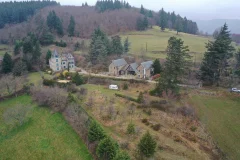Midi-Pyrénées Geography
Midi-Pyrénées climate is generally made up of cold Winters and warm Summers. There are lots of regional variations depending on local conditions and terrains.
France is mostly composed of flat plains or gently rolling hills. This region is different and boasts many mountains, valleys and lakes.
The following criteria are typical of Midi-Pyrénées geography:
- hills, plains, valleys
- many lakes
- flat, hilly and mountainous land
- many forests
Historically, Midi-Pyrénées is made up of several former French provinces:
- 24.2% of Midi-Pyrénées is Gascony: western half of Haute-Garonne department, southwest of Tarn-et-Garonne, Gers in its entirety, extreme north of Hautes-Pyrénées. Gascony here includes the province of Comminges, which historically was a Pyrenean province, but later expanded all the way north to Muret in the southern suburbs of Toulouse, then was fragmented, and became an eastern fringe of Gascony. Gascony also extends over the Aquitaine region.
- 23.4% of Midi-Pyrénées is Languedoc: eastern half of Haute-Garonne, southeast of Tarn-et-Garonne, Tarn in its entirety, northwest and northeast of Ariège. Languedoc includes the sub-province of Albigeois (Tarn department), which is sometimes considered as a province separate from Languedoc. Languedoc also extends over the Languedoc-Roussillon region.
- 19.9% of Midi-Pyrénées is Rouergue: Aveyron department in its entirety, and extreme east of Tarn-et-Garonne. The province of Rouergue is entirely contained inside Midi-Pyrénées.
- 15.4% of Midi-Pyrénées is Quercy: department of Lot in its entirety, and northern half of Tarn-et-Garonne. The province of Quercy is entirely contained inside Midi-Pyrénées.
- 16.6% of Midi-Pyrénées is a collection of small Pyrenean provinces, from east to west: County of Foix (eastern half of Ariège), Couserans (western half of Ariège), Nébouzan (extreme south of Haute-Garonne and extreme east of Hautes-Pyrénées), Quatre-Vallées (i.e. "Four Valleys") (east of Hautes-Pyrénées), and Bigorre (west and center of Hautes-Pyrénées). All these provinces are entirely contained inside Midi-Pyrénées.
Finally, it should be noted that in demographic terms, given the overwhelming demographic weight of Toulouse (located in Languedoc), the majority of the inhabitants of Midi-Pyrénées live in the Languedoc part of Midi-Pyrénées. As a matter of fact, the historical flag of Languedoc, the Occitan cross, was adopted as the official flag of the Midi-Pyrénées region by the regional council. This historical flag of Languedoc is itself derived from the coat of arms of the old county of Toulouse.









